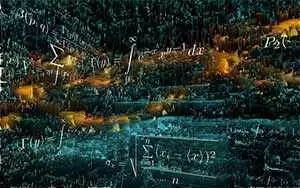Celiac.com 01/26/2015 - Celiac disease occurs along a spectrum, which includes cases where patients have only minor histological abnormalities, or, what is called "potential celiac disease."
 Can a scientific equation based on immunohistochemical analysis of duodenal biopsies help to better diagnose celiac disease and cases of potential celiac disease? A team of researchers recently set out to assess the potential of immunohistochemical analysis of duodenal biopsies to aid in the diagnosis of gluten-related minor enteropathy.
Can a scientific equation based on immunohistochemical analysis of duodenal biopsies help to better diagnose celiac disease and cases of potential celiac disease? A team of researchers recently set out to assess the potential of immunohistochemical analysis of duodenal biopsies to aid in the diagnosis of gluten-related minor enteropathy.
Celiac.com Sponsor (A12):
The research team included A. Tosco, M. Maglio, F. Paparo, L. Greco, R. Troncone, and R. Auricchio. They are affiliated with the Department of Translational Medical Science, Section of Pediatrics, and the European Laboratory for the Investigation of Food Induced Diseases at the University Federico II in Naples, Italy.
For their analysis, the team looked at duodenal biopsies from 56 untreated celiac patients and 56 control subjects, and assessed patients based on CD3 and γδ intraepithelial lymphocytes number, γδ /CD3 ratio, and density of CD25+ lamina propria cells.
To help them blindly evaluate 61 more biopsies with normal villous architecture, the team used a discriminant equation, that is, an equation that allows them to determine whether the patient has celiac disease based on the four factors noted above. Both celiac patients and control subjects showed widely variable immunohistochemical ranges, and no single parameter showed sufficient specificity for celiac disease. However, by combining parameters for all four markers, the team was able to produce an accurate discriminant equation.
The result of the team’s discriminant equation is a score called a Dscore. Their equation is as follows: Dscore = (CD3 x 0.06) - (γδ x 0.119) + (CD25 x 0.012) + (γδ /CD3 x 0.131) - 4.709.
Under the team’s system, patients’ Dscores could be used to correctly point to celiac disease in 97.3% of cases.
When the team applied this equation to a validation set of 61 patients with normal villous architecture and unknown diagnosis, 92.9% of those with a positive score turned out to be potential celiac patients. However, a normal score did not exclude celiac disease.
In certain cases, immunohistochemistry can be helpful for diagnosing celiac disease, but, because it lacks sensitivity, it can miss some potential celiac cases.
Source:
- Open Original Shared Link






Recommended Comments